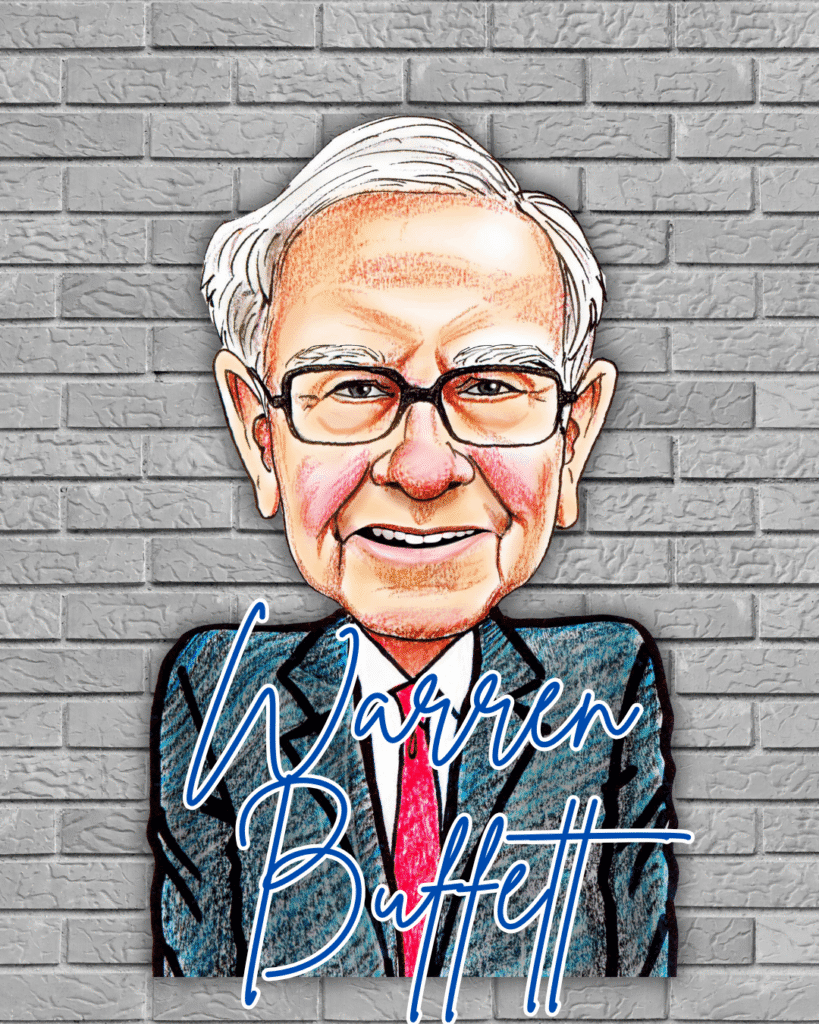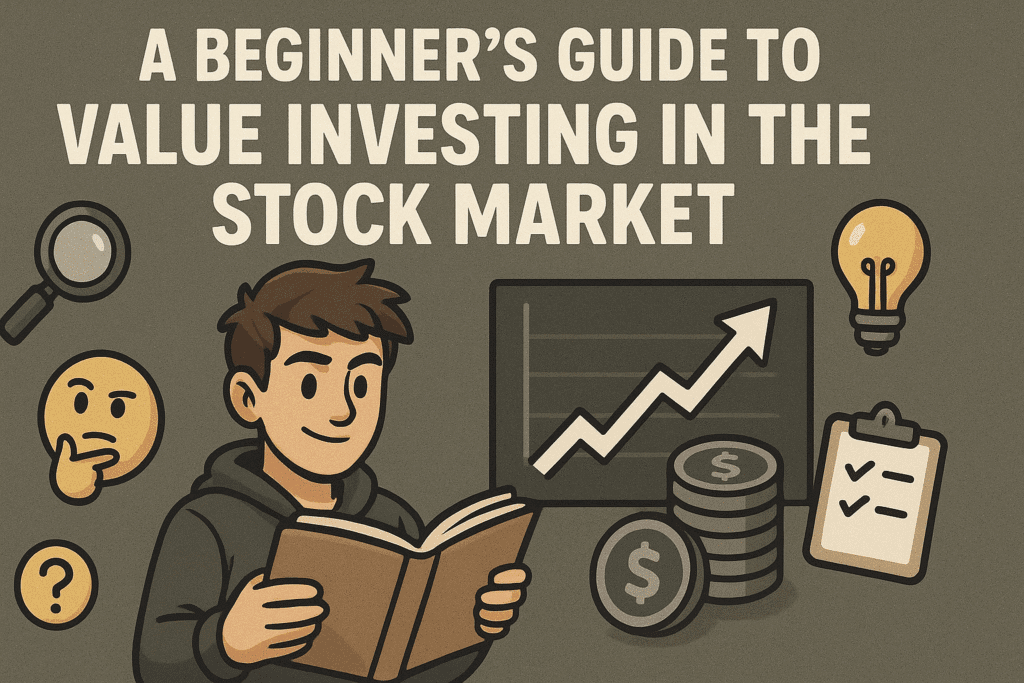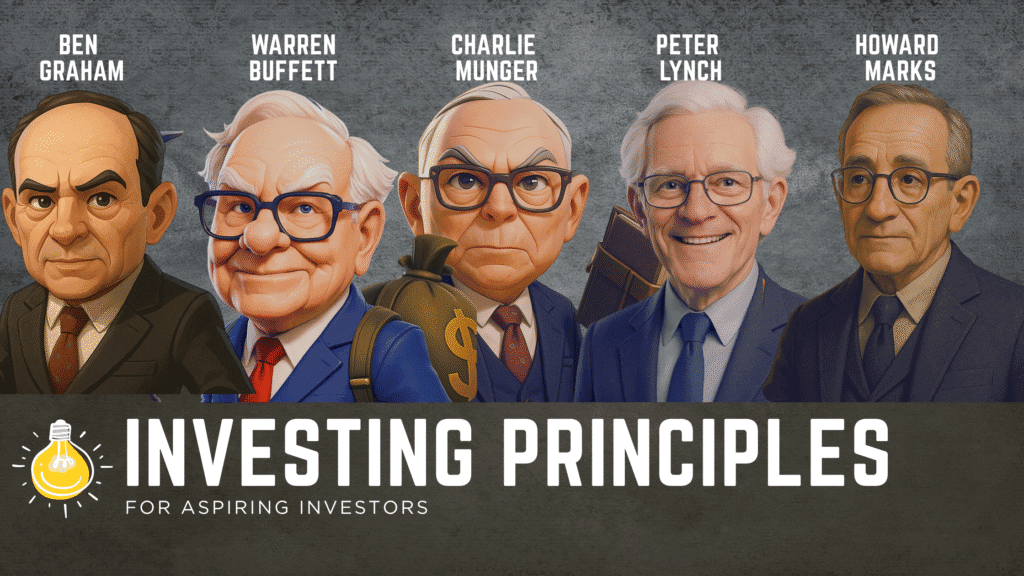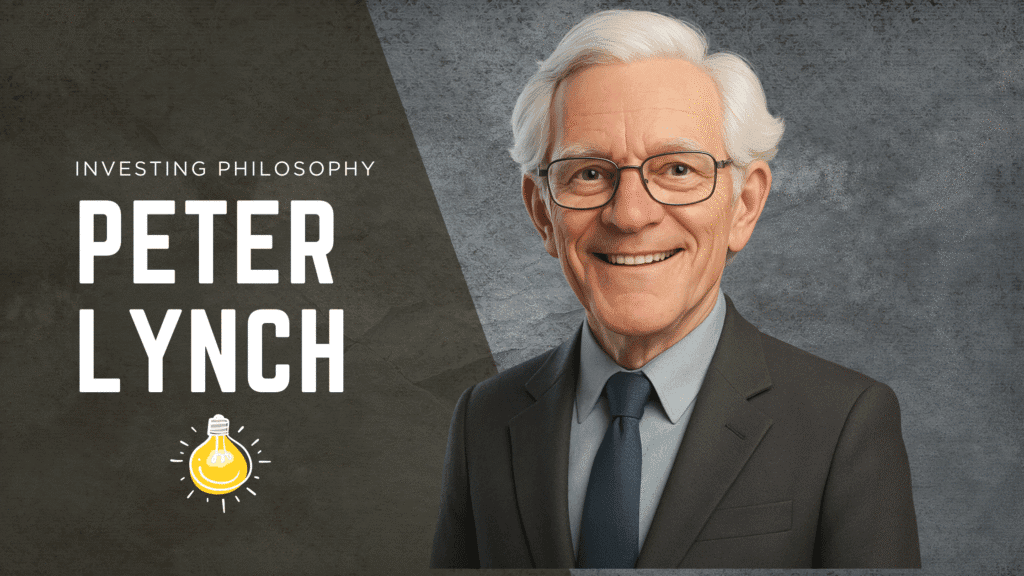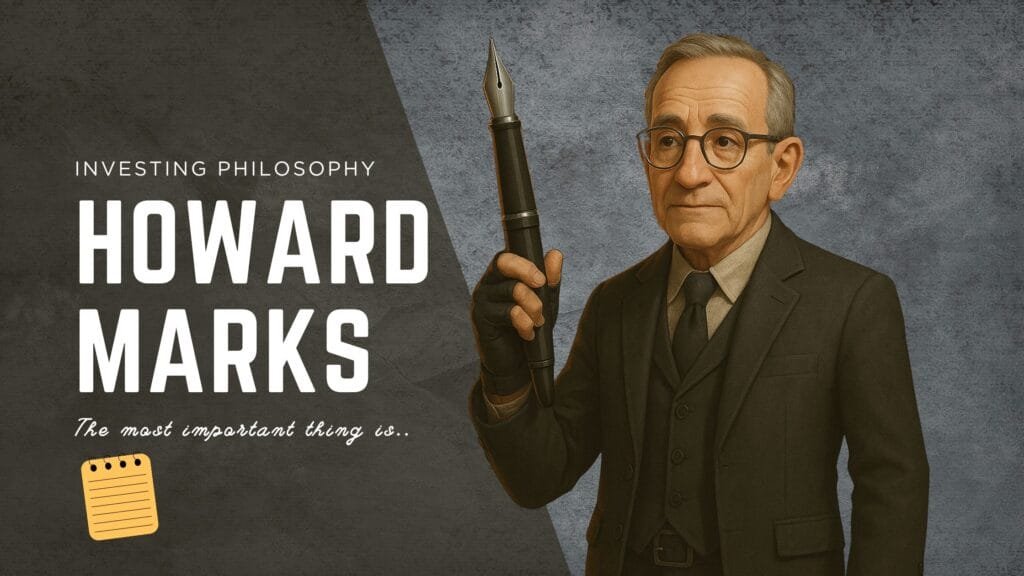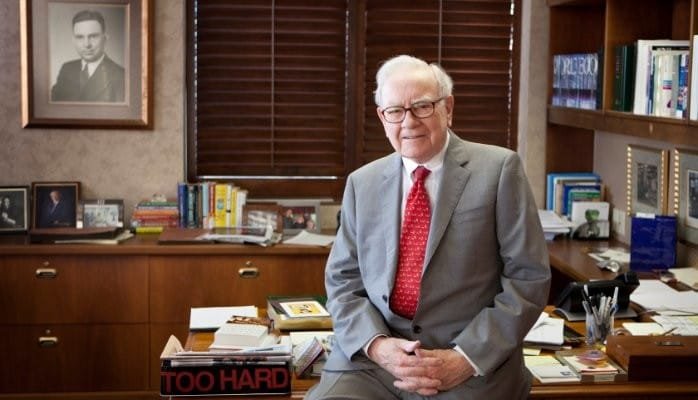Mohnish Pabrai’s Best Quotes on Investing, Success and Life
Mohnish Pabrai is not just an investor—he’s a teacher, storyteller, and a disciple of the Buffett-Munger school of thought. His approach is practical, focused, and easy to understand. But, what are Mohnish Pabrai’s Best quotes? Here’s a deep dive into ten of his most well-known principles and quotes, what they mean as well as a few examples of how Pabrai has lived them in his own investing journey.
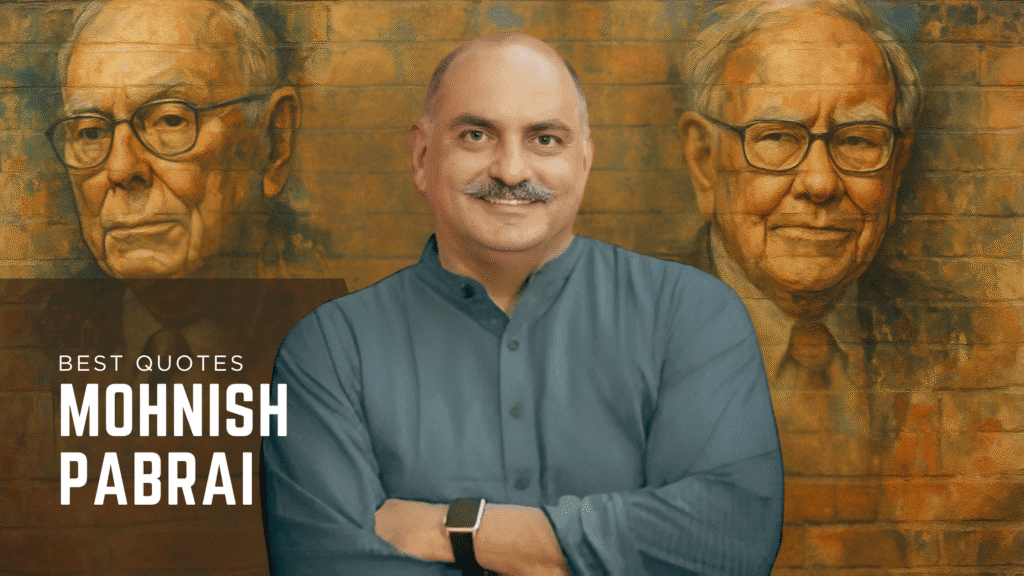
Before becoming a professional money manager, Pabrai ran a successful IT services business, TransTech. By 1994, he had accumulated $1 million of his own capital, He stumbled upon books on Warren Buffett as well as Peter Lynch’s One Up on Wall Street and the value-oriented approach to investing deeply resonated with him. He began investing money to test the value investing approach. He was entirely self-taught and obsessively focused on finding stock ideas.
Pabrai’s results were outstanding. By closely following Buffett’s methods—buying businesses with a margin of safety, avoiding complexity, and waiting patiently for the right opportunities—he grew his capital to $14 million in just 5 years, an astonishing CAGR of 70%. This track record gave him the confidence and credibility to launch Pabrai Investment Funds in 1999, modeled directly after Buffett’s original partnerships from the 1950s and 60s. He structured the fund with no management fee, only earning performance-based fees after a 6% hurdle—just like Buffett did.
Since then, Pabrai has continued to run his fund with a focus on value, patience, and simplicity. Along the way, he’s also become one of the most articulate advocates for cloning great ideas, learning from mistakes, and keeping emotions in check.
Let’s do a deep dive into his most well-known principles and quotes:
1. “Heads I win, tails I don’t lose much.”
The Principle:
This quote reflects Pabrai’s deep commitment to asymmetric risk-reward investing. The idea is to invest in opportunities where the downside is limited but the upside is significant.
Pabrai’s Explanation:
He attributes this framework to the teachings of Warren Buffett and Charlie Munger, emphasizing that investing should be about “low risk, high uncertainty,” not the other way around.
Example:
One of Pabrai’s classic “heads I win, tails I don’t lose much” investments was Ipsco Steel in the early 2000s. The company was trading at just 3 times earnings, had a strong balance sheet, and was benefiting from surging demand for steel due to global infrastructure growth, especially in China. Pabrai saw that even in a worst-case scenario, the downside was minimal because the company’s earnings and assets provided a huge cushion. Eventually, Ipsco was acquired at a massive premium, and Pabrai made a 4x return on his investment in under two years. The limited downside with substantial upside made this a textbook example of his asymmetric risk-reward principle.
2. “There is no such thing as a value trap. There are investing mistakes.”
The Principle:
Pabrai challenges the common term “value trap,” arguing that if a stock doesn’t perform as expected, the error lies in the investor’s analysis—not the market.
Pabrai’s Explanation:
“Calling something a value trap is just blaming the stock. If the thesis didn’t pan out, it means you made a mistake in judgment.”
Example:
He once invested in Horsehead Holdings, a zinc recycler, believing it was a misunderstood company with solid assets. When it filed for bankruptcy, Pabrai admitted the error was his—he misjudged their liquidity needs and management’s competence. Rather than blaming the stock, he reflected and called it a learning experience.
3. “All intelligent investing is value investing.”
The Principle:
Pabrai echoes Benjamin Graham and Warren Buffett in asserting that value investing—buying assets for less than their intrinsic value—is the only logical approach to investing.
Pabrai’s Explanation:
“It doesn’t matter whether you’re buying high-growth tech companies or broken-down coal mines. What matters is whether you’re paying less than what it’s worth.”
Example:
Pabrai bought Alibaba through its spinoff Prosus, which owned a large stake in Tencent since he analysed that the market was valuing the holding company far below the value of its assets.
4. “Buy a dollar for 50 cents.”
The Principle:
This simple rule is the heart of value investing. The margin of safety is key: buying well below intrinsic value reduces downside and boosts upside.
Pabrai’s Explanation:
He often says,
“Capital is scarce. You want the most bang for your buck. That means paying 50 cents for a dollar.”
Example:
During the financial crisis, Pabrai invested in Bank of America preferred shares, which were trading at a steep discount and offered high yields. Despite market panic, he viewed them as a low-risk bet backed by a strong institution and government support. This investment paid off handsomely, and was a calculated, low-risk, high uncertainty bet with a large margin of safety.
5. “Your deepest desire is your destiny.”
The Principle:
This quote, borrowed from the Upanishads and often repeated by Pabrai, speaks to aligning your actions with your innermost passions. The full quote from the Upanishads is as follows:
“You are what your deep, driving desire is.
As your desire is, so is your will.
As your will is, so is your deed.
As your deed is, so is your destiny.”
Pabrai’s Explanation:
Pabrai believes that once you identify your deepest desire and commit to it fully, everything in your life will begin to align toward that outcome. In his words:
“The universe does not hear what you say. It hears what you are. Once you’re clear about what you want, and it comes from a deep, authentic place, things begin to move in that direction almost effortlessly.”
Example:
In the late 1990s, despite running a highly successful tech services company (TransTech), Pabrai felt a deep pull toward investing. He was inspired by Warren Buffett l and became obsessed with learning everything about value investing. Acting on that inner drive, he began investing his own capital using Buffett’s principles. That path eventually led him to launch Pabrai Investment Funds, structured in the same spirit as Buffett’s 1950s partnerships. Pabrai is on his way to achieve his deepest desire to convert $1 million to $1 billion.
6. “We are old too soon and wise too late.”
The Principle:
Life is short, and wisdom often comes after mistakes have already been made. While this quote is not a Pabrai original, it emphasises the importance of learning from mistakes early—ideally from others’ mistakes rather than your own. Self-reflection, humility, and rapid learning are especially crucial in investing where avoiding just a few big mistakes can massively impact long-term results.
Pabrai’s Explanation:
“If we could only absorb the lessons of others and shorten our learning curve, we’d get so much further.”
Example:
Pabrai says he gained ten years of investing experience instantly by studying Buffett and Munger. He avoided early-career mistakes many hedge fund managers make by shamelessly cloning Buffett and Munger’s methods, which saved him both time and money.
7. “Mistakes are the best teachers.”
The Principle:
Every failed investment or bad decision is a golden opportunity to learn something valuable—if you’re willing to confront the truth.
Pabrai’s Explanation:
“When you lose money, don’t lose the lesson. Study it deeply. What did you miss?”
Example:
After his loss in Horsehead Holdings, Pabrai did a deep post-mortem analysis, realizing he failed to appreciate the business’s capital intensity and misjudged management quality. That lesson made him far more cautious in future turnaround bets.
8. “There are no called strikes in investing.”
The Principle:
Borrowed from Warren Buffett, this baseball analogy means you don’t have to swing at every pitch. You can wait for the perfect opportunity.
Pabrai’s Explanation:
“You can sit with cash for months or years. No one’s forcing you to invest. Be patient.”
Example:
In many periods, Pabrai has held large amounts of cash or made very few investments. For instance, in 2017, he concentrated heavily in just a few names and ignored the broader market—waiting for fat pitches instead of being overly active.
9. “Be Singularly Focused like Arjuna.”
The Principle:
From the Mahabharata, this principle encourages undivided focus on one goal—like the warrior Arjuna, who saw only the eye of the bird he was aiming at.
Pabrai’s Explanation:
“You need to tune out everything else. Don’t focus on macro forecasts, or short-term noise. Focus on the business, its moat, and its intrinsic value.”
Example:
Pabrai deeply admires Warren Buffett’s lifelong focus and pursuit of compounding, which is the only game Buffet ever wanted to play. Buffett avoided distractions — and remained singularly focused on his “inner scorecard”.
Pabrai often points out how Buffett didn’t pursue power, politics, or a lavish lifestyle. Instead, he stuck with the same goal and the same simple principles for decades. That kind of laser focus allowed Buffett to build one of the greatest fortunes ever built — simply by being consistent and patient.
Pabrai has tried to emulate that in his own life by staying focused on just a few things: investing well, running his fund ethically, and giving back through philanthropy. Like Arjuna, and like Buffett, he believes success is about saying no to everything except the one thing that matters most.
10. “Be a shameless cloner.”
When Pabrai says “Be a shameless cloner,” he’s not advocating blind imitation. He’s encouraging investors to leverage the wisdom, principles, hard work, and research of others as a powerful filter. By studying what great investors have already figured out, you can reduce your own mistakes and focus your energies on something that has a greater probability of success. If a top-tier investor has already done deep diligence on a company, that saves you hundreds of hours—and gives you a head start.
Example:
One of the clearest examples of Pabrai’s cloning mindset was his investment in Fiat Chrysler (FCAU). While the idea originally came from an investment conference presentation, Pabrai used the insight as a filter to dig deeper. He found that CEO Sergio Marchionne was executing a brilliant turnaround, and the company was trading at a massive discount to its intrinsic value. After validating the thesis himself, he invested heavily—and it became one of his best-performing investments. The process illustrates how cloning, in Pabrai’s view, isn’t about copying blindly but about using external ideas as a source of inspiration and filtering for further research.
In short, cloning is not laziness—it’s rational humility. It’s the recognition that in a noisy world, other people’s high-quality research is a competitive advantage.
If you like these quotes, you can check out our Canvas Print with these quotes:
Mohnish Pabrai Canvas Print with Best quotes
Mohnish Pabrai’s 10 best quotes, beautifully printed on canvas. Elevate your office or home with this inspiring piece of wall art.
Featured products
‘Notebook of Wisdom’ with 160 Investing Quotes
Original price was: $99.00.$69.00Current price is: $69.00.AI Stock Research Checklist with Prompts
Original price was: $30.00.$15.00Current price is: $15.00.Canvas Print with Warren Buffett success quotes and caricature
Original price was: $119.00.$89.00Current price is: $89.00.
You might also like other unique collectibles from our Charlie Munger and Warren Buffett Collections:





